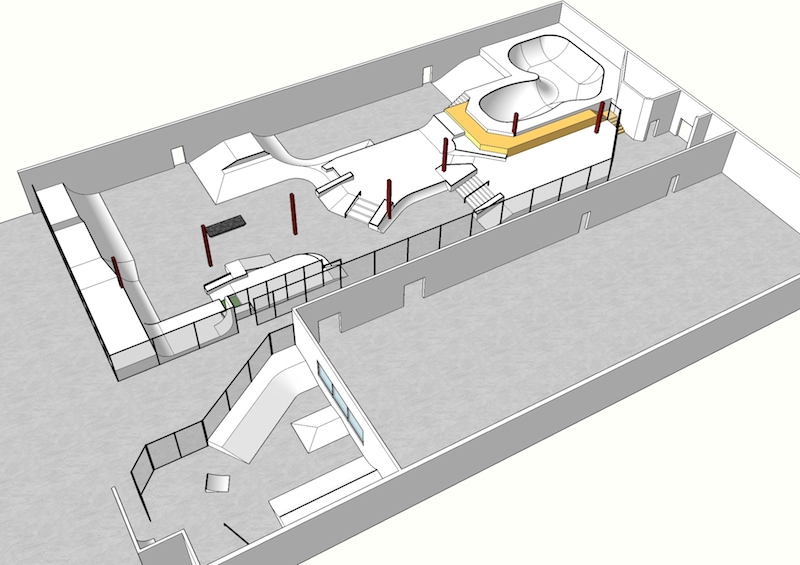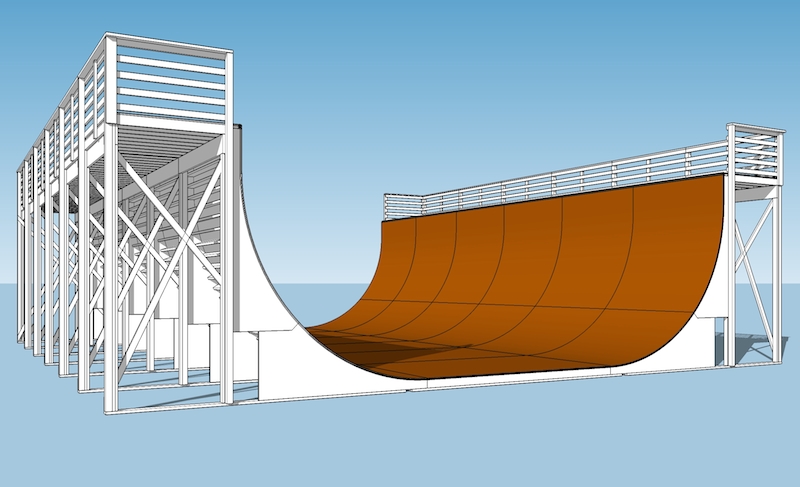Group or Component
-
Yes indeed, deep nesting can cause problems, but to the best of my knowledge those problems are not reduced by using groups rather than components.
-
It's not about solving a problem but preventing them.
A cube could be 6 square faced components wrapped as a component then arrayed. Then wrap the array and array the arrayed component etc...
That's a problem.
Try making a sphere from the minimum amount of faces as components. SU chugs.
As I said components are great. But application needs to be considered.
-
I'm not questioning the fact that using too many components can cause problem, I'm just pointing out that the use of too many groups can be just as troublesome but without any significant benefits.
My only point being that in my own personal view it may as well be a component even if there is only one because it has useful properties besides being able to multiply.
The discussion is about the advantages or disadvantages of one over the other, rather than the potential downside of using too many of either. -
Point taken.
-
.
this sort of sums it up for me as far as my component vs group..
this is the end of the first phase of drawings.. space usage/flow/layout/etc -- all the objects are just shells with none of the structure.. i've used 4 component definitions and 66 groups in the model.

in contrast, here's a drawing of a single structure with all the framing instead of just a shell.. it contains 8 groups and 47 component definitions..

for me, i just use components when i need components.. otherwise, i use groups.
.
-
Box
As an aside, the AB or BA-609 is now the AW-609.
AB was Agusta-Bell and BA was Bell-Agusta. Using AB or BA depended on which side of the Atlantic you were on (Italy or USA).
However Bell divested its share of the partnership and Westland (British) picked it up, so now it is the AW-609. The aircraft is in final certification testing, and due (way overdue) to be certified late this year or early next.
As far as group/comps are concerned, either can be copied to the side and worked on or looked at. I do this a lot, especially if a comp to be edited is deeply buried in other geometry.
However unless the various combinations of parts are properly nested (within separating groups/comps) and visibly separated by layers, you cannot compare various sets to find interferences or commonalities. You need the freedom to do both.
Again, I agree that comps overall are "better" than groups, and unique comps. can in most cases replace a group, but all 3 have unique attributes that are useful when needed.
-
There is one other thing that differentiates components from groups. This was tested a long time ago in the original SketchUp forum when this recurring discussion came up. Layers and Layer0 was next most common.
SU is a database of linked objects.
A component is a SINGLE definition of a bunch of objects in the database.
Multiple copies of that comp are simply lookup pointers to the original comp definition in the database. That's why a change to any one copy of a comp. will affect all other copies.
A group is also a definition of a bunch of objects, but each multiple occurrence in the model is a separate definition in the database. That's why a change to a group does not affect any other same group copies.
That is also why a lot of the same groups make for a much bigger database file than a lot of the same comps.
When SU wants to display a group, it has the definition in the database right at hand. Takes nearly no time to compute the display.
When SU wants to display a comp. it has to go and lookup the definition each and every time to display it. That takes a bit more time plus the display time.
That is why a very small model with a lot of one component will take a longer time to display than a large model with the same number of objects as groups.
Like I said before, and as others said too, use groups or comps according to the attributes you need.
One is not "better" than the other unequivocally. -
I only mentioned the BA AB thing because a search of the warehouse using the name you listed found nothing. So I had to search for you then look for the revevant model.
Nice model it is too. -
My simple question has spawned a very interesting, and informative, discussion.
My primary use for Sketchup is to create objects which I can then import into Bryce. The objects can be created using other programs, but I find I can create them quicker using Sketchup.
It was good someone brought files sizes, because large files can help to increase render times in Bryce. I also have to be mindful when applying material in Bryce because sometimes a object, which was created in parts, doesn't import into Bryce with those same individual parts. So it is necessary to make sure when an entity is made a component, or group, they import into Bryce the same. Which isn't something which has been previously brought up.
Whether an entity is created as a component or group, it must also be taken into consideration if the model is likely to be imported/used in another 3D program. Because I'm only able to afford the free version of Sketchup, exporting using .dae enables me to import the same into Bryce because Sketchup.dae format is listed in Bryce's import list. And so far, my creations have imported into Bryce with only minor modifications. And yes, I know about the Object exporter plug-in, but it's use has caused me problems when importing into Bryce. But is this the case for other 3D programs? I use few others, so I don't know. Yet, this too much be considered.
-
.......Added to what all have said, It helps me save the elements in my design for later use in my components folder.
R
Advertisement







